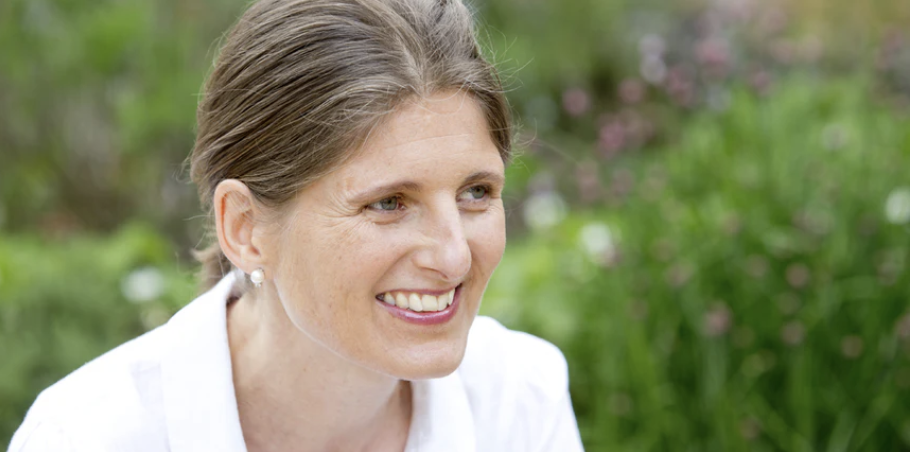
Welcome to Our Guest Blog by Lucinda Miller MH MRNI MGNI
We are delighted to share this insightful guest blog post written by Lucinda Miller, a renowned naturopath and functional medicine practitioner. With over 25 years of experience and a deep passion for children’s health, Lucinda offers valuable guidance on how to protect our children from environmental toxins. Dive into her expert advice to learn practical strategies for reducing toxin exposure and supporting your child’s health and development.
In today’s world, children are exposed to a variety of environmental toxins, including heavy metals and “forever chemicals.” While most children can detoxify these substances efficiently, some find this harder to do. Studies have found that neurodivergent children, particularly, struggle to detoxify efficiently, leading to a build-up of harmful toxins. Emerging research also points to a potential link between toxin exposure and various developmental challenges, including learning difficulties and behavioural issues. If you want to protect your child from these pollutants, understanding where they come from and how to reduce exposure is essential.
Everyday toxins are hidden in our food, water, air, and household products. Children are particularly vulnerable due to behaviours like putting toys or non-food objects in their mouths, not drinking enough water, or suffering from constipation. Genetic factors can also influence how well their bodies detoxify. For example, children with difficulty producing glutathione – a powerful antioxidant that helps remove toxins – are at greater risk of toxin build-up.
What is Glutathione
In a nutshell, glutathione is the body’s master antioxidant, crucial for detoxification and cell repair. If a child genetically produces low levels of glutathione, toxins such as heavy metals and microplastics may accumulate, potentially leading to neurological issues and increased inflammation. Boosting glutathione through diet can help. Foods like avocados, asparagus, broccoli and spinach support its production, as do nutrients like vitamin C, selenium, and folate.
Key Toxins to Avoid
Reducing exposure to harmful toxins in the home can make a big difference in supporting a child’s health and development. Here are some common pollutants to be aware of:
Lead: Lead is highly toxic to children, even in small amounts, affecting brain development and behaviour. Lead can be found in older homes, particularly in paint, dust, and soil. To reduce exposure, use a HEPA air filter, clean dusty areas with a damp cloth, and take precautions during renovations to prevent disturbing old lead paint.
Mercury: Mercury is a neurotoxin that can affect memory and motor skills. It’s found in large predatory fish like tuna and in “silver” dental fillings. Reduce mercury exposure by choosing smaller, low-mercury fish such as salmon or sardines and asking your dentist about mercury-free filling options.
Arsenic: Arsenic is found in rice, poultry, and some fruit juices. Long-term exposure can lead to developmental delays. Washing rice thoroughly and choosing organic poultry and washing/peeling fruit are simple ways to reduce arsenic exposure.
Aluminium: Aluminium exposure, found in cookware and foil, has been linked to potential cognitive issues. Choose stainless steel or glass cookware and avoid wrapping acidic foods like tomatoes in aluminium foil.
Plastics (Bisphenol-A and Phthalates): Plastics can contain Bisphenol-A (BPA) and phthalates, which disrupt hormones (early puberty for girls, late puberty for boys) and can interfere with brain development. These are found in food packaging, plastic water bottles, and personal care products. Opt for glass or stainless-steel containers for food and drinks and choose personal care products labelled “phthalate-free.”

Reducing Toxin Build-Up
While we can’t avoid all toxins, there are ways to support your child’s natural detoxification. Here are foods to enjoy:
- Drink plenty of filtered water: this helps with constipation, and to help the kidneys to function effectively.
- Include pectin-rich fruits: apples, pears, and citrus fruits help bind and remove heavy metals.
- Cruciferous vegetables: broccoli, cabbage and cauliflower support the liver’s detox pathways.
- Selenium: found in Brazil nuts, pulses and eggs, selenium boosts glutathione production.
- Epsom salt baths: magnesium sulphate in Epsom salts supports detoxification.
By taking proactive steps – like reducing plastic use and including supportive foods in your child’s diet – you can significantly reduce exposure to environmental toxins. Small changes can have a big influence on your child’s long-term health and development.
Bio
Lucinda Miller is the clinical lead of the UK-wide NatureDoc team, and with over 25 years of experience as a naturopath and qualifications in Functional Medicine, Lucinda has authored three bestselling books The Good Stuff, I Can’t Believe It’s Baby Food and Brain Brilliance. She lectures at the leading UK nutrition colleges and is a popular speaker at schools where she holds talks and workshops for parents, teaching staff and pupils. She and two of her children live and thrive with ADHD. www.naturedoc.com
References
- Who benefits most from a prenatal HEPA filter air cleaner intervention on childhood cognitive development? The UGAAR randomized controlled trial
- Portable HEPA Filter Air Cleaner Use during Pregnancy and Children’s Cognitive Performance at Four Years of Age: The UGAAR Randomized Controlled Trial
- A Review of Dietary (Phyto)Nutrients for Glutathione Support
- Mercury and Autism Spectrum Disorder: Exploring the Link through Comprehensive Review and Meta-Analysis
- The Relationship Between the Level of Copper, Lead, Mercury and Autism Disorders: A Meta-Analysis
- The relationship between mercury and autism: A comprehensive review and discussion
- Mercury and autism: accelerating evidence?
- Neurobehavioural effects of developmental toxicity
- Role of metallic pollutants in neurodegeneration: effects of aluminum, lead, mercury, and arsenic in mediating brain impairment events and autism spectrum disorder
- Metal and essential element concentrations during pregnancy and associations with autism spectrum disorder and attention-deficit/hyperactivity disorder in children
- Half of US population exposed to adverse lead levels in early childhood
- The effect of lead exposure on IQ test scores in children under 12 years: a systematic review and meta-analysis of case-control studies
- The relationship between childhood blood lead levels below 5 µg/dL and childhood intelligence quotient (IQ): Protocol for a systematic review and meta-analysis
- CDC updates blood lead reference value to 3.5 µg/dL
- Blood Lead Levels in Children
- Recommendations on Management of Childhood Lead Exposure
- Healthy Diet & Lead Poisoning Prevention
- The role of modified citrus pectin as an effective chelator of lead in children hospitalized with toxic lead levels
- Discharge of lead contamination by natural compounds pectin and chitin: biochemical analysis of DNA, RNA, DNase, RNase and GOT in albino rat as an early bio-marker of lead-toxicity
- Cellular and molecular toxicity of lead in bone
- A pharmacokinetic model of lead absorption and calcium competitive dynamics
- A study found that children exposed to high levels of arsenic performed worse on tests of working memory, verbal comprehension, and perceptual reasoning.
- A cross-sectional study of well water arsenic and child IQ in Maine schoolchildren
- Arsenic and manganese exposure and children’s intellectual function
- Prenatal and childhood arsenic exposure through drinking water and food
- and cognitive abilities at 10 years of age: A prospective cohort study
- The Effects of Arsenic Exposure on Neurological and Cognitive Dysfunction in Human and Rodent Studies: A Review
- Longitudinal study of the effects of occupational aluminium exposure on workers’ cognition
- Does aluminum exposure affect cognitive function? a comparative cross-sectional study
- Bisphenol-A and phthalate metabolism in children with neurodevelopmental disorders
- Early-life exposure to EDCs: role in childhood obesity and neurodevelopment
- Plasma phthalate and bisphenol a levels and oxidant-antioxidant status in autistic children
- Phthalate and bisphenol a exposures during pregnancy: Findings from the National Children’s Study
- Bisphenol A Exposure in Children With Autism Spectrum Disorders
- Dietary Strategies for the Treatment of Cadmium and Lead Toxicity
- Contribution to interaction between magnesium and toxic metals: the effect of prolonged cadmium intoxication on magnesium metabolism in rabbits
- Selenium and lead: mutual detoxifying effects
- Selenium detoxification of heavy metals: a possible mechanism for the blood plasma
- The role of modified citrus pectin as an effective chelator of lead in children hospitalized with toxic lead levels
- Discharge of lead contamination by natural compounds pectin and chitin: biochemical analysis of DNA, RNA, DNase, RNase and GOT in albino rat as an early bio-marker of lead-toxicity
- A Review of Dietary (Phyto)Nutrients for Glutathione Support
- Mercury toxicity and antioxidants: Part 1: role of glutathione and alpha-lipoic acid in the treatment of mercury toxicity
